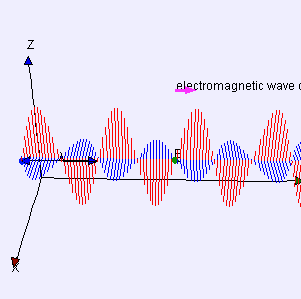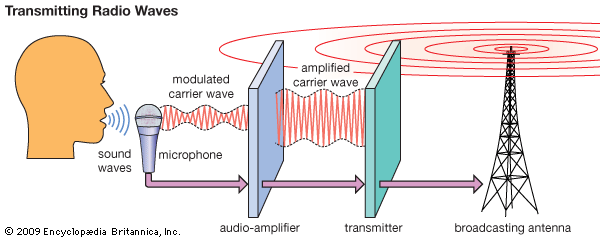When we think of our origin story -- the origin of everything in the Universe -- many of us think of, "let there be light!" This is true whether you consider the Big Bang origins of our Universe or the biblical stories we've told for thousands of years, yet few of us pause to consider what the phenomenon of light actually is.
We take for granted, today, that it's an electromagnetic wave, yet this was only determined by James Clerk Maxwell in 1865: exactly 150 years ago. A few decades later, the first trans-Atlantic radio transmission took place, turning this theoretical novelty into one of the most powerful technological tools ever developed.
The science of unification wave born 150 years ago; come and celebrate the story -- and the genius -- of Maxwell!
- Log in to post comments



A timeline to put this in context:
1820: Oersted discovers that direct current in a wire moves a compass needle. This appears to be the first demonstration of a relationship between electricity and magnetism.
1832: Schilling demonstrates first electromagnetic telegraph.
1837: Cooke & Wheatstone demonstrate first commercially-practical electromagnetic telegraph in the UK
1837: Morse & Vail demonstrate first commercially-practical electromagnetic telegraph in the USA.
1865: Maxwell publishes the paper that is the subject of this article, unifying electricity and magnetism.
1876: Bell files patent for the telephone.
1882: D'Arsonval & Deprez develop the type of moving-coil galvanometer that is still in use today.
1897: Marconi demonstrates wireless telegraphy for GPO engineers, UK.
So the questions I have are:
Were everyone from Oersted through Morse & Vail working on the basis of the prior Newtonian theory of electricity and magnetism? Or were they working empirically without having a clear basis in theory?
How could one get from Newtonian theory to the development of electromagnetic apparatus including the telegraph?
Assume a simple electromagnet: wire wound round a nail. Before Maxwell, what did they think was going on?
They thought it was two effects; electricity and magnetism.
Being able to make one from the other was no more "surprising" than being able to get heat and light from combustion.
I dare say there were some proposing there was some unitary thing, and there were some definitely proposing that their coincidence was *important*, but Maxwell, a bit like Darwin with Evolution, brought the two things together in a rigorous and meaningful way.
@G #1: What Wow said is correct. Ethan also outlined it pretty clearly in the article itself: there were experimental demonstrations, with quantitative description, that electric currents could produce magnetic fields; *and* there experimental demonstrations, with quantitative description, that a moving (changing) magnetic field could produce an electric current.
In order to produce automatic telegraphs, telephones, etc., all you need are those apparently separate experimental facts. What Maxwell noticed was that the forms of the equations involved were suspiciously similar, and used that hint to derive a self-consistent theory connecting them.
The gif is wrong: The E and B field are 90 degrees apart in phase
Maxwell's accomplishment seems even more impressive when you consider that concepts like div, grad, and curl hadn't been developed at the time. So he worked out his equations in component form (20 simultaneous differential equations in 20 variables). I looked at his original work once (available from Dover Publications) and it is amazingly complex.
A court decision ruled that Marconi's claim to invent radio transmission was invalid, as Tesla had invented it first. Also, some scientists and engineers say the government withdrew books conveying Maxwell's original equations to hide certain processes for "National Security", and replaced them with a modified version of Maxwell's equations.
I'm confused by the notion that electromagnetism is "more fundamental" than either electricity or magnetism by itself. My naive understanding is that the moment something CAN be split, the things it can be split into become the new fundamental things. I mean, we don't describe water as "more fundamental" than oxygen or hydrogen by themselves, or protons as "more fundamental" than quarks, so what gives?
Because electricity and magnetism are merely two aspects of the same phenomenon.
There is no "electricity" without magnetism, and no "magnetism" without electricity. Because it's the same thing (electromagnetism) being measured differently (the movement of charged particles in a straight line or in a curve)